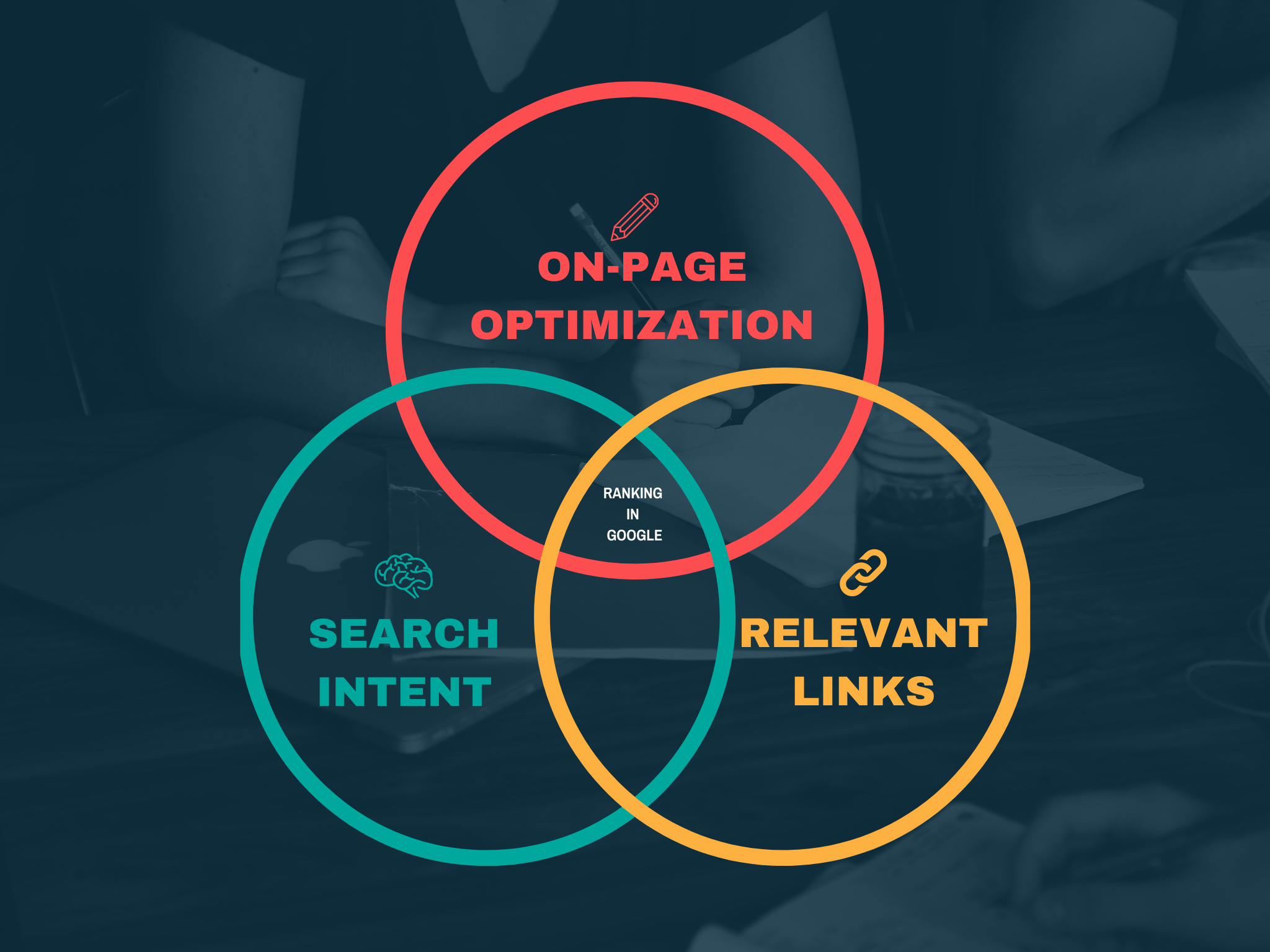
To rank successfully in Google, there are three main factors that must work together. These factors are on-page optimization, relevant links, and keyword search intent. It is the latter that we will focus on in this article.
Put simply, search intent – also known as user intent or RankBrain – is the why behind a person’s search query. Are they looking for information? Do they want to make a purchase?
So, by the end of this article, you should have a better understanding of keyword search intent as well as why you should work with Google’s perception of intent related to your content and links as it is absolutely essential to gain rankings in search engines.
As mentioned, keyword search intent is the reason why someone has searched a particular phrase or word. It is a way to understand the goal behind a user’s query in a search engine. This keyword provides valuable context about the reason(s) someone has searched it. More often than not, the user has specific information they want to find.
If your page doesn’t adequately match the search intent of the keyword, Google isn’t going to rank it and all of your efforts will fail.
So, it’s critical to understand the different types of keyword search intent, and make sure your target pages match up closely to the intent behind the keyword you want to rank the page for.
Here’s a brief explanation of the four types of search intent:
The user is search for information to expand their knowledge on a subject, with potential of a transaction but not a certainty.
This type of search intent refers to the user searching a phrase or word to act upon or buy a product.
If an internet user searches for information to educate or inform them before they act upon it, this is research/commercial search intent.
Just as it sounds, navigational search intent is the queries internet users search for when they know the action they want to take.
The best way to begin planning your SEO campaign around search intent is by sorting the webpages you want to rank into search intent categories. By doing this, and perfecting your plan, you will have a clear understanding of the goals you have behind wanting people to visit your pages.
Below, you will see examples of the type of content people can create and the search intent that matches it.
Informational articles = brand awareness
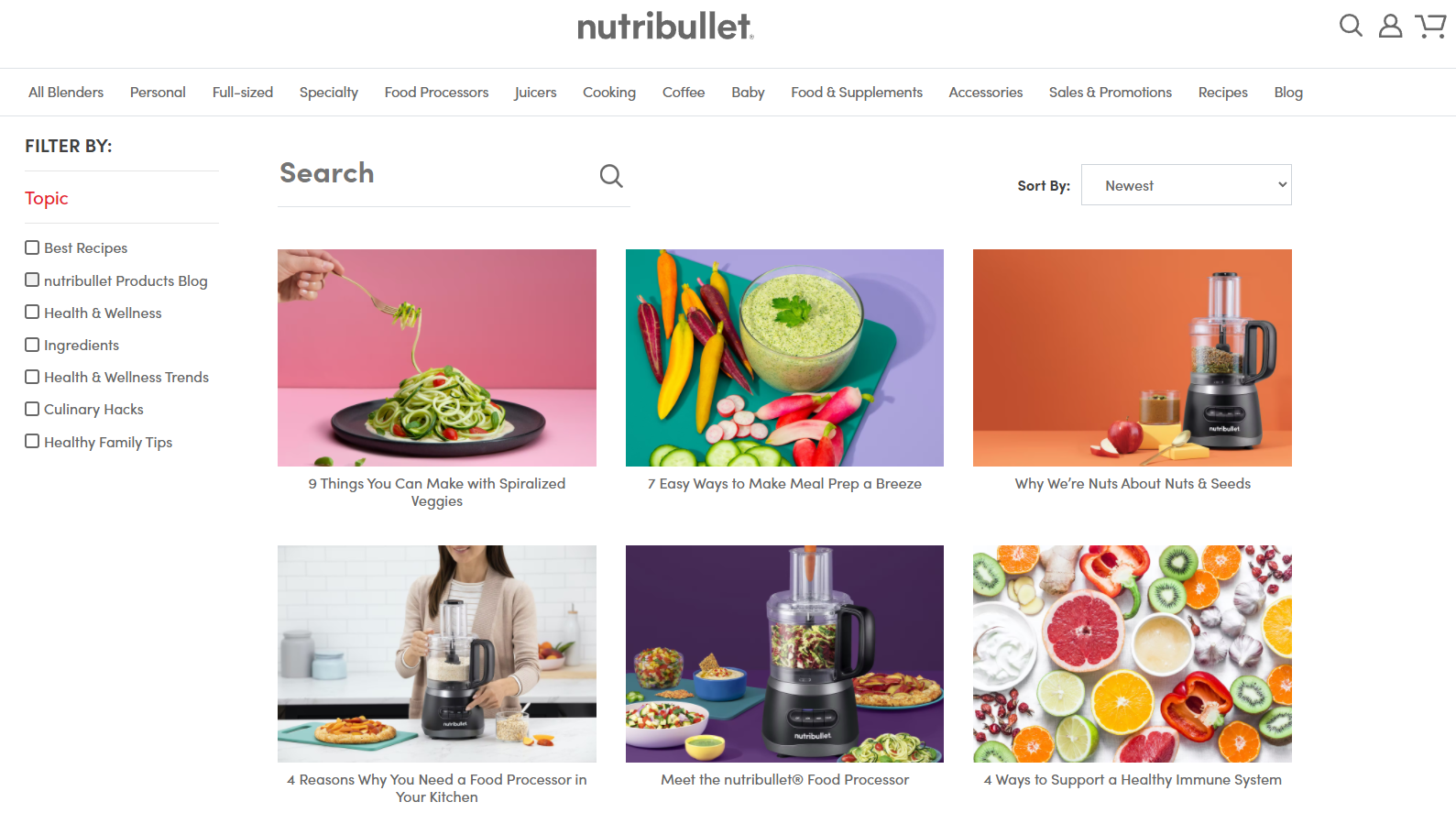
This image shows a series of blog posts published on the Nutribullet website. Most of these posts are how-to articles and listicles giving advice; this provides the reader with useful solutions or information to their searches.
Informational articles with commercial search intent = indirectly convert visitors to customers
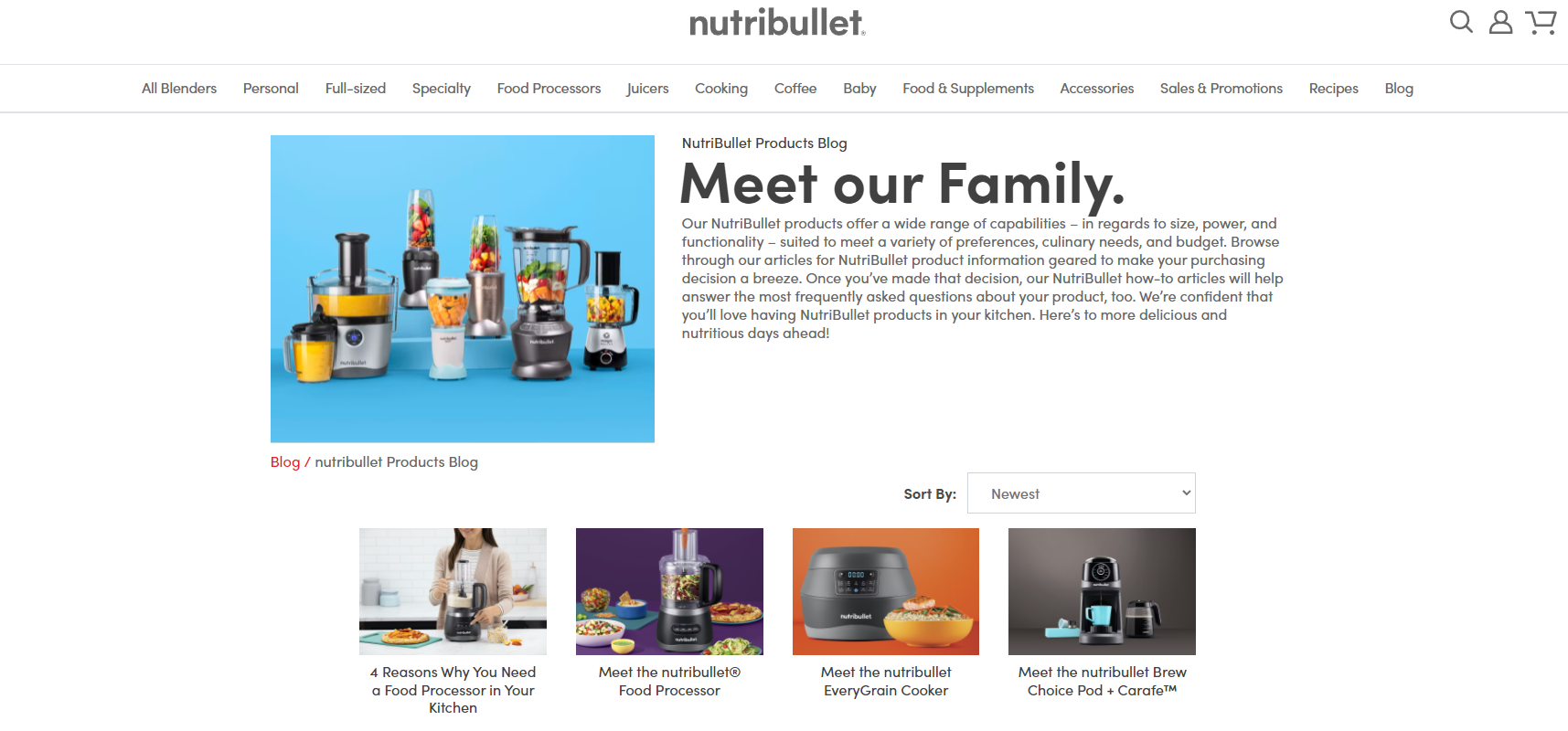
Here we can see a range of articles posted on the Nutribullet website that includes their products; how to use the product, the specs of the product, etc. This provides the user with information, but there is also an undertone of commercialism. Links to the products are included in the articles, potentially prompting readers to become customers.
Online shopping pages = direct sales from visitors
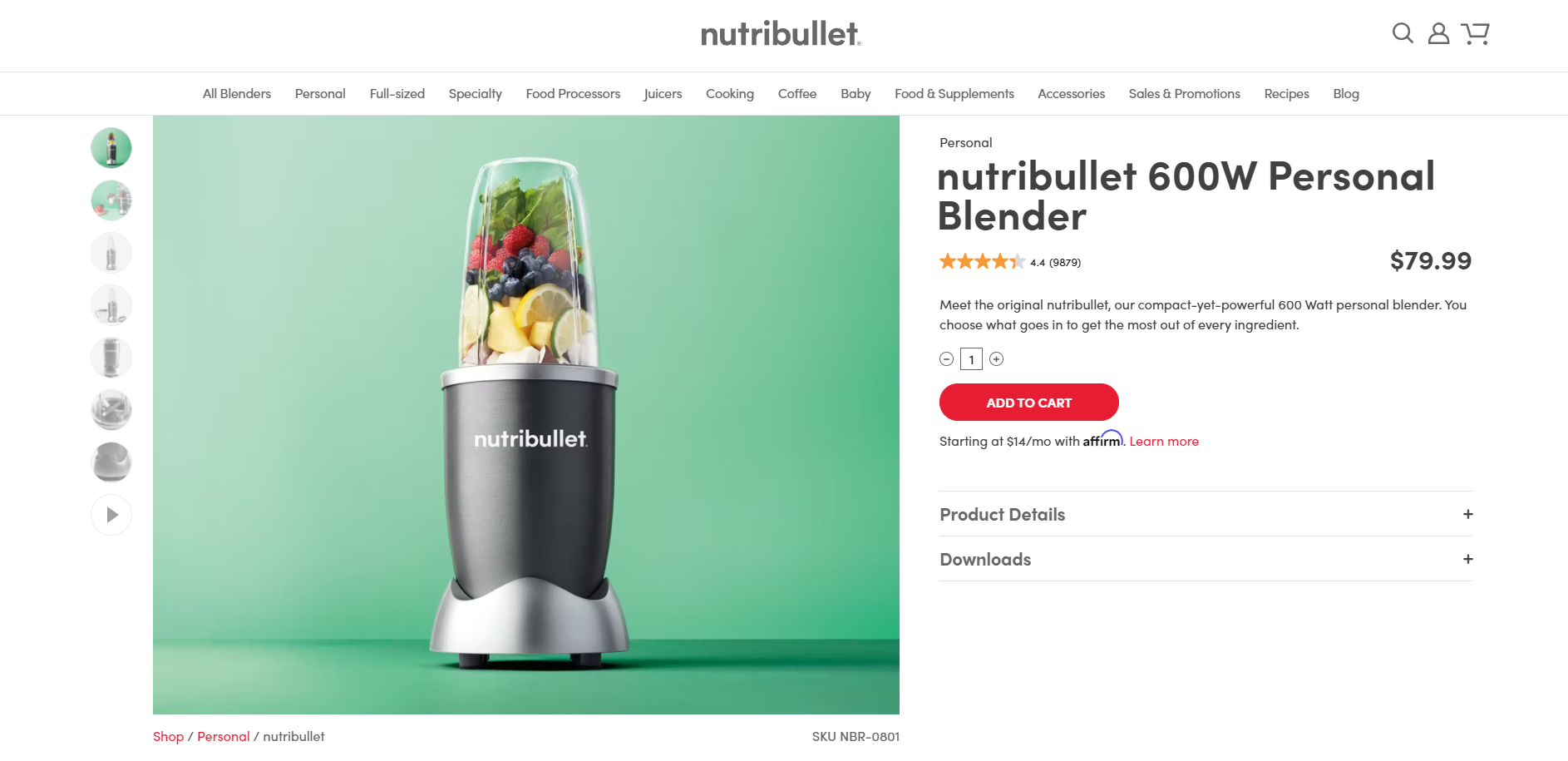
Product and online shopping pages are unsurprisingly created for internet users who want to buy. Pricing, reviews, product details, and the “add to cart” button are essential on pages like this, both to provide proof of the product’s specs and encourage buying.
If you take the time to learn about this, you will be able to better prioritise your choices when deciding the keywords you want to spend energy on first. You can gather a full list of keywords you want to rank for, then look to categorise how Google has determined their search intent.
Search intent, as previously discussed, can be one of four different types. This means it can be difficult to determine the specific intent, but it can be made easier if you pay attention to the way Google presents the results.
To make this easier, we have created a scenario with Nutribullet as our client; the company wishes to rank this page www.nutribullet.com/shop/blenders/ for the keyword “best blender under $100”. Unfortunately, this is not a match between keyword search intent and page intent; this shall be explored further in this article.
The examples shown below aim to help you understand how the type of search intent can be found.
First off, there is the Research/Informational search intent.
With this type of keyword search intent, it is not a certainty that the user will make a transaction, but there is potential. More often than not, Research/Informational intent is used when a person searches the internet for content to expand their knowledge on a subject.
You might find that informational searches include words like:
For the subject of blenders, a search might be “best way to user a smoothie blender”.
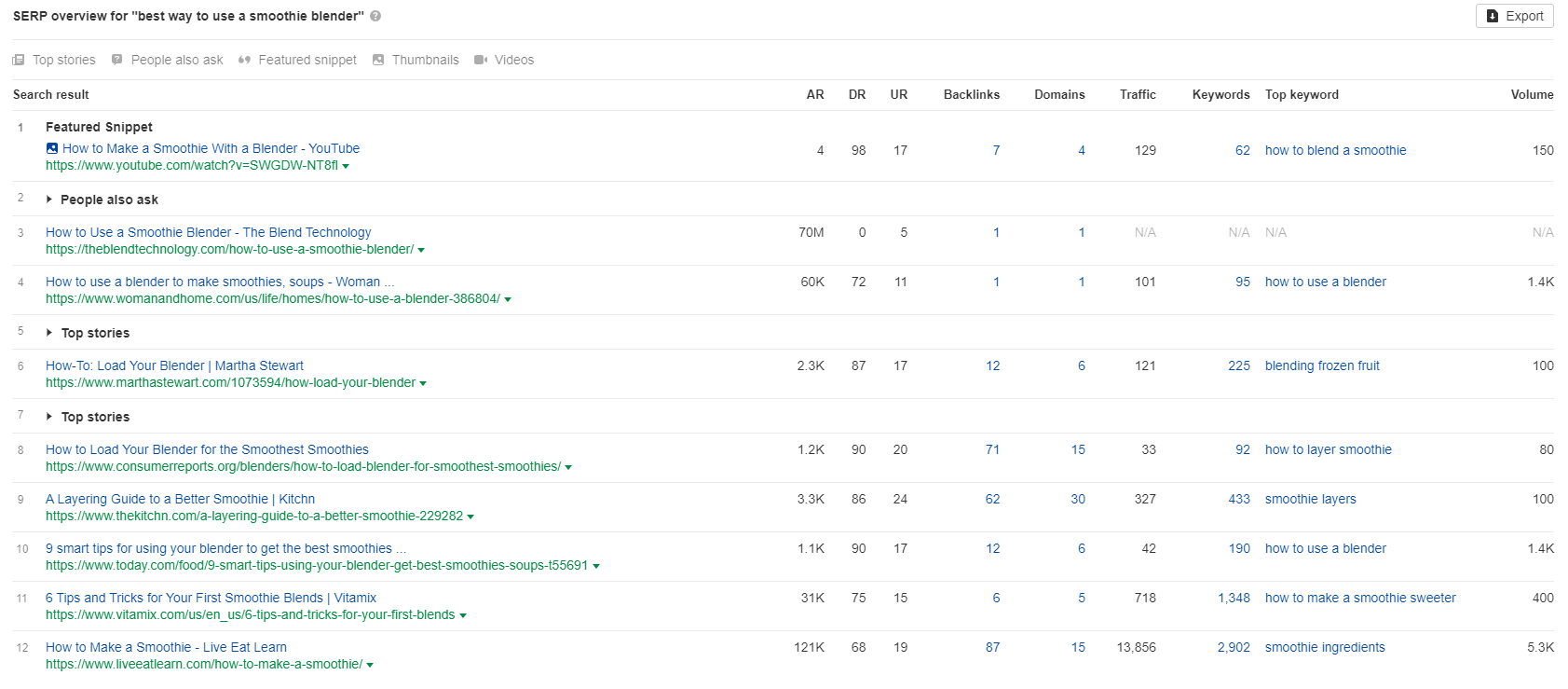
As shown by this image, the search results are Research/Informational intent. For the target page chosen by Nutribullet, which is a product page, this would not be the best search intent to pursue.
Second is the Transactional/Commercial type of search intent.
It was previously mentioned that this type of keyword search intent refers to users looking to buy a product or act upon their search.
A common search term in this intent can include product names, such as “nutribullet 600w personal blender”. We can see from the image below that all of the results for this search are to product pages or online stores, like Amazon and Walmart, meaning Google determines this query as Transactional/Commercial.
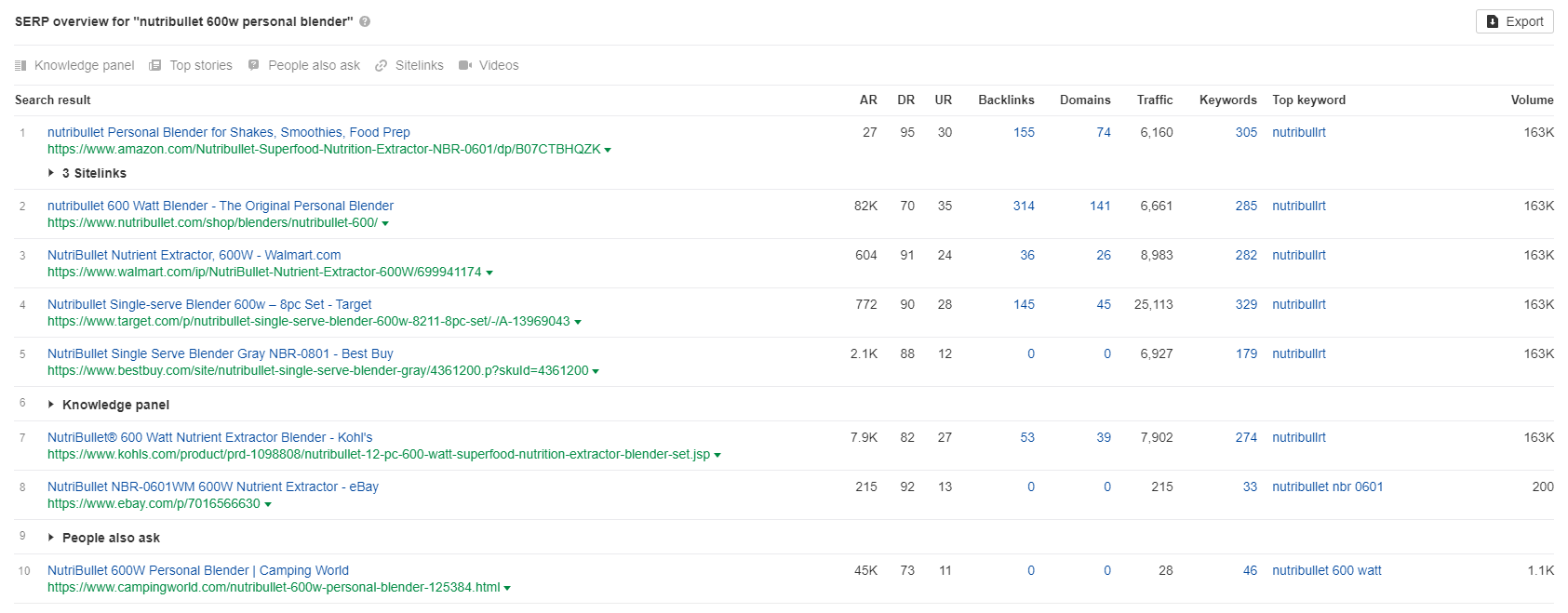
From these results, we can see that this brings up the results that Nutribullet is looking for, so it might be beneficial for the company to consider changing the keyword they want to target.
As well as product names, Transactional/Commercial searches can also contain words like:
Then there is Research/Commercial.
This type of keyword search intent is usually used by people who want information to enable them to make the most informed choice later. For our hypothetical client, their chosen keyword “best blender under $100” can fit under this type of search intent.
However, a product or shopping page, like the target page Nutribullet wants to rank, does not fit this particular intent. When searching on Ahrefs, you can see that the first page of results on the SERP overview is filled by reviews and comparisons; this shows that this is a term people are using to educate themselves before buying a blender.
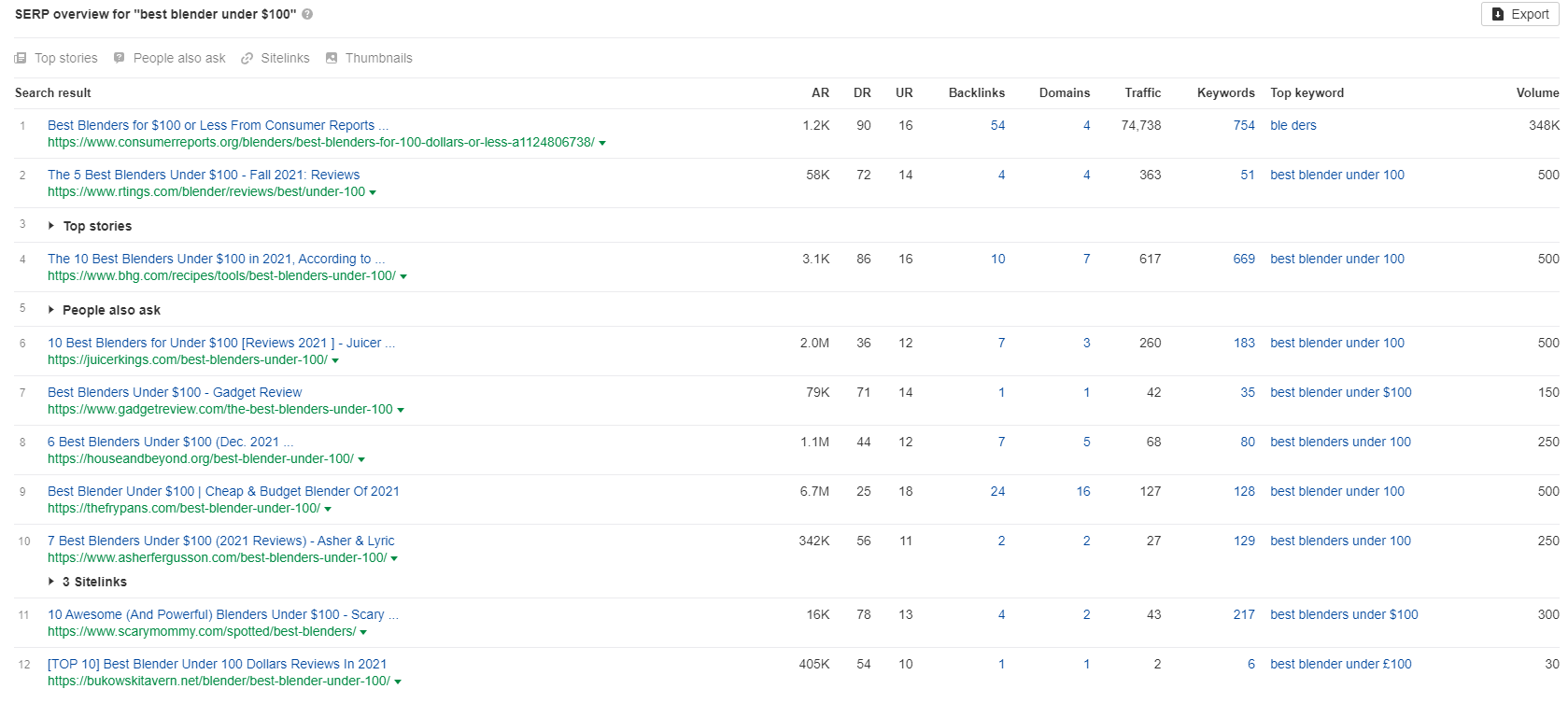
This highlights that Google would be unlikely to rank a product page for this phrase, so it would be wasted effort and budget on Nutribullet’s part if they pursued this keyword with the product page they want to target.
However, they could choose to target this keyword if they changed their target page.
And finally, the Navigational search intent.
Navigational intent describes the searches people use to find a site; they use Google as a shortcut instead of typing out the entire URL. Most people use this to find login pages, like Facebook or other social media platforms. In the case of Nutribullet, internet users could search for “nutribullet warranty registration” to find information on an appliance’s warranty or register the guarantee.
The top result shown by SERPS is www.nutribullet.com/warranty/, and you can see below that this result has been positioned at number one since before April 2020.
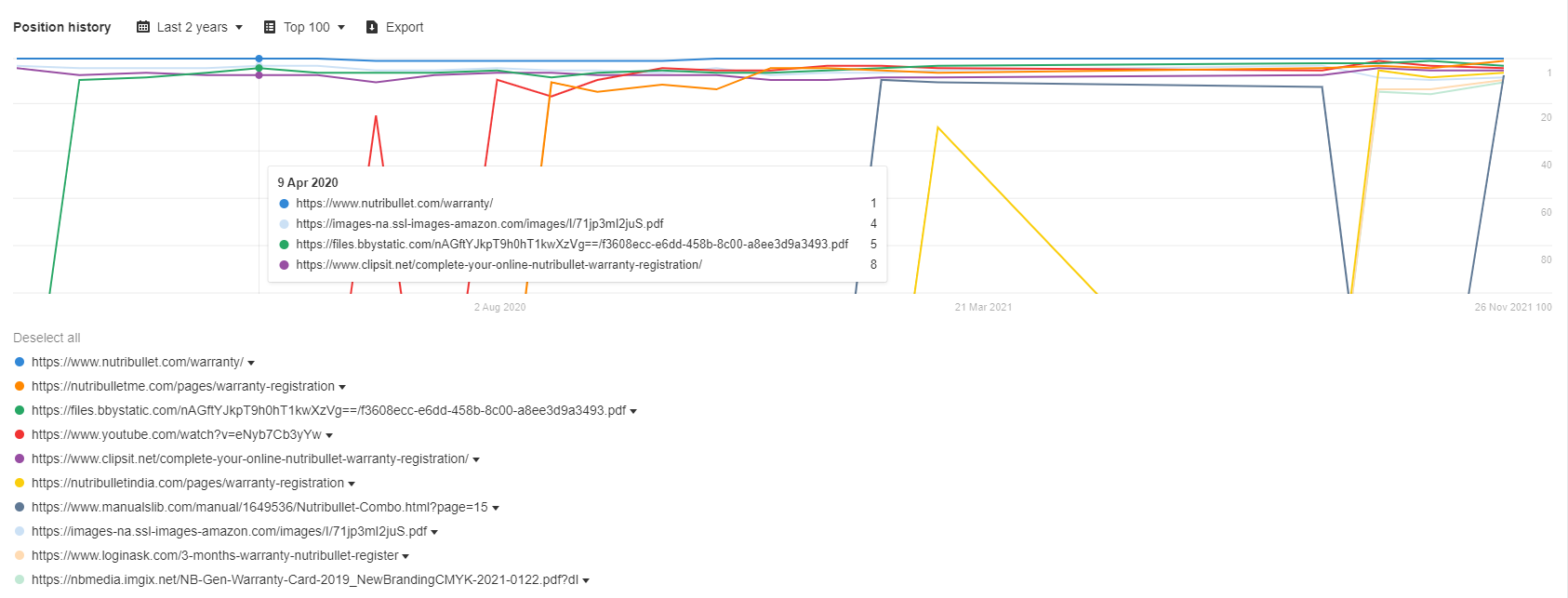
As much as Google can help you determine the search intent of certain phrases, it is also a possibility you will come across split intent results. Split intent describes a keyword that can mean different things to different people.
In the example below, we have used Ahrefs to obtain the SERP overview of the keyword “cheap blender”. There is a slight variation of results for this term; it appears to select both Transactional/Commercial and Research/Commercial results, as shown by the shopping sites and comparison sites.
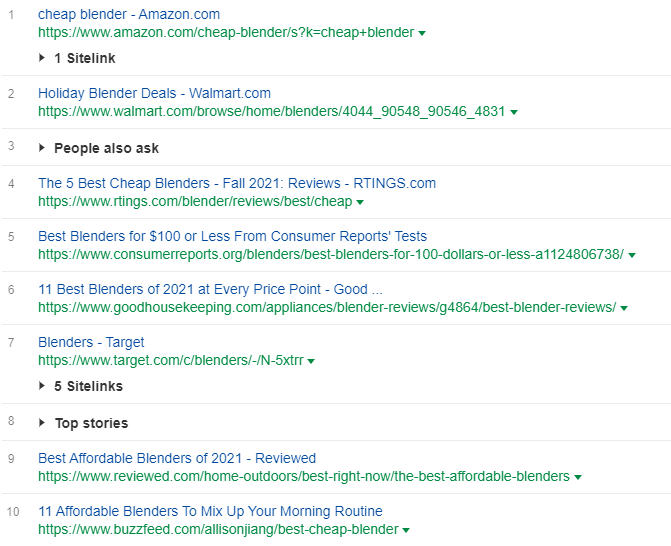
In this case, it would be a judgement call on your part to to deem which is the best intent or you might choose to follow what the majority shows.
After you have determined the search intent related to your niche, you will find your target pages and target keywords have been categorized by the search intent. This means you can move on to optimize them for the other two factors essential to successfully rank on Google; on-page optimization and relevant links.

It is possible to increase the trustworthiness and engagement of your site if you have correctly matched the pages and keywords. Unsurprisingly, Google is much more likely to rank sites that will provide the best experience to those using the internet. This can even boost your site’s authority.
Finally, you are at the stage of optimizing for keyword search intent. There are a variety of aspects you can optimize to ensure you have the best chance at ranking in Google.
But not only are there various factors to optimize, there’s also different ways you can establish the correct optimization.
This doesn’t mean you should necessarily copy what your competitors are doing, but it might be beneficial to see the keywords and rankings they have. It can give you an insight into what works for your niche and what doesn’t.
In the case of Nutribullet, it might be wise to look at NinjaKitchen, which also sells kitchen appliances.
There is always the opportunity to improve your website. By obtaining a clearer understanding of search intent, you can build your webpage further and achieve better rankings. For this, look at the setup of your target pages.
If you have a product page that you want to rank, ensure to tick all of the boxes for this layout – product image, product details, pricing, relevant buttons and such for a shopping page – and make sure you use related keywords. Again, here is a product page from Nutribullet to use as an example.

Similarly, if your search intent is Research/Informational, then you don’t want internet users to land on a product page immediately. You want to provide useful and relevant information for people looking to educate themselves.
But you shouldn’t ignore the other types of keyword search intent; there might be an opportunity to include them in other ways. If your target page is a blender product page, then you might also find an opportunity to write an article on it to cover the informational intent, like Nutribullet has.
When it comes to the type of content you should produce, you must ensure the content fits the keyword search intent. This is similar to the page layout. Pay close attention to providing what your target audience is searching for.
Again, using the hypothetical client of Nutribullet, if the internet user is looking for the best blenders for under $100, the company might write an article ranking and reviewing their own blenders for that price. This would provide the internet user with relevant information as well as fulfilling the keyword search intent.
There might also be content gaps in search engines that you can fill. A good way to find out if there are any gaps is to look at the feature snippets provided by Google, like the people also ask section. This can provide topics to write content on, as shown by the search results below.
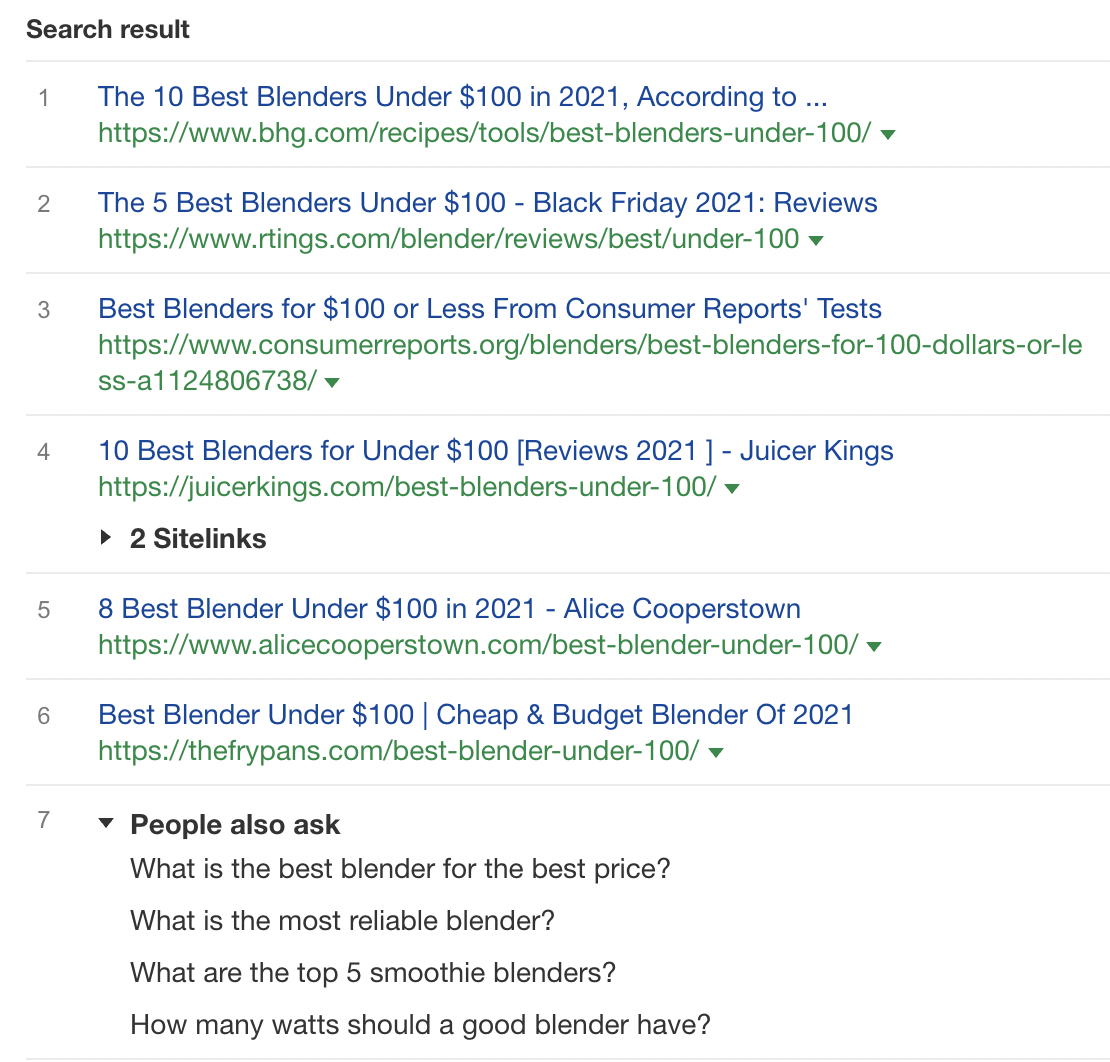
Future content produced by Nutribullet might include articles on the necessary wattage needed for blenders or how to find a reliable blender. There is a readership for these topics as people have already searched for them.
It’s not just the type of content that can be catered to your keyword search intent. Within the content you produce, you can optimize for the keyword search intent by including the keywords in the following:
*Although some guides on search intent encourage the avoidance of external links, this doesn’t have to be the case. If the external link adds value to your content, then you should always include it. You should never omit information from your readers if it will benefit them.
Every month we give away 2 platinum tier links to new subscribers of our newsletter.
Sign up now for helpful outreach/link-building tips and exclusive discounts
* By entering the monthly prize draw, you agree to subscribe to updates from OutreachPete via email, you can unsubscribe at any time
Every month we give away 2 platinum tier links to new subscribers of our newsletter.
Sign up now for helpful outreach/link-building tips and exclusive discounts
* By entering the monthly prize draw, you agree to subscribe to updates from OutreachPete via email, you can unsubscribe at any time